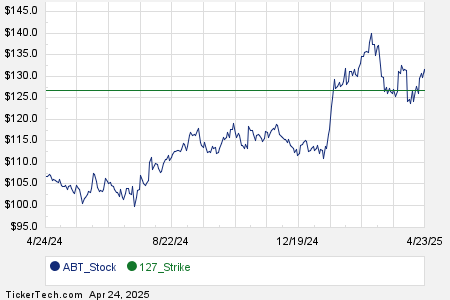Amazon Faces Tariff Challenges Amid Tariffs, AWS Growth Promises
On April 2, President Trump announced plans to implement various tariffs on imported goods from nearly all of America’s trading partners. Amazon (NASDAQ: AMZN) sources products globally for its e-commerce platform, potentially leading to significantly higher costs for items sold on its site. The company must decide whether to absorb these costs or pass them on to customers, as these tariffs could significantly impact its profit margins.
Fortunately, Amazon is a diversified technology conglomerate. Not all its segments are directly affected by these trade tensions. Its Amazon Web Services (AWS) cloud platform primarily provides digital services, which are not subject to conventional tariffs. This is encouraging news, as AWS accounts for the bulk of Amazon’s profits.
Given the ongoing tariff turmoil, Amazon stock has experienced a 28% decrease from its recent all-time high. The company is set to release its financial results for the first quarter of 2025 on May 1, which could serve as a positive catalyst. Investors may wonder if it is a good time to buy during this dip ahead of the report.

Image source: Amazon.
Focus on Amazon Web Services
AWS provides a range of cloud solutions to help businesses adapt to the digital world, including data storage, video streaming, and software development tools. As the largest platform of its kind globally, AWS leverages its scale to enter the promising field of artificial intelligence (AI). Amazon CEO Andy Jassy highlights AI as a unique business opportunity.
AWS is innovating across three essential layers of AI:
- AWS has created custom data center chips known as Trainium, which can reduce AI training costs for customers by up to 40% compared to third-party suppliers such as Nvidia.
- It has also launched a proprietary family of large language models (LLMs), called Nova, which can deliver up to 75% cost savings compared to other models available on the AWS Bedrock platform.
- Lastly, AWS has built an advanced virtual assistant named “Q,” capable of writing programming code and helping businesses analyze internal data to identify new revenue opportunities.
AWS generated a record $107.5 billion in revenue during 2024, contributing 16.8% to Amazon’s total revenue of $637.9 billion. Despite being a smaller portion of total sales, AWS remains highly profitable, accounting for more than half of Amazon’s operating income of $68.6 billion.
In the early part of last year, AWS’s quarterly revenue growth surged to 19% and held steady. Wall Street will scrutinize whether AWS maintained this momentum in early 2025 and if the growth of AI services played a significant role when the financial results are released on May 1.

Wall Street Anticipates Earnings Growth in Q1
E-commerce remains Amazon’s largest revenue source. However, it operates with narrow profit margins. In recent years, the company has worked to enhance its efficiency, restructuring its U.S. logistics network into eight regions in 2023. This restructuring allows Amazon to stock different products in fulfillment centers based on regional popularity, resulting in shorter delivery distances, reduced costs, and improved delivery times.
These changes have already contributed to substantial earnings growth for Amazon last year. However, the new tariffs threaten to undermine this progress. Currently, tariffs will increase the cost of every product Amazon imports into the U.S. by at least 10%. Some products from China could see price hikes as high as 245%.
Wall Street will be keen to hear how CEO Andy Jassy plans to address these challenges. The short-term performance of Amazon stock may depend on analysts’ satisfaction with his strategy.
Despite challenges, Wall Street’s consensus estimate indicates Amazon could achieve earnings of $1.36 per share (EPS) in Q1, representing a strong 38.7% increase compared to the same period last year. AWS is expected to significantly bolster the company’s earnings during these global trade tensions, along with other segments like digital advertising and video streaming, which are unaffected by tariffs.
Amazon Stock Offers Value After Recent Decline
The 28% decline in Amazon stock from its peak presents a potential opportunity for investors. The stock now trades at a price-to-earnings (P/E) ratio of 31.1, considerably lower than its five-year average of 83. While it may not return to that previous high, Amazon has historically traded at a premium to the Nasdaq-100 index, which currently stands at a P/E ratio of 27.1.
Looking ahead to 2026, analysts expect Amazon to post $7.52 in EPS, suggesting a forward P/E ratio of just 22.9. Consequently, the stock would need to rise by 35.8% by the end of next year to maintain its current P/E of 31.1:

Data by YCharts.
In summary, the principal reason for considering a long-term investment in Amazon stock today is its current valuation, rather than expectations surrounding the Q1 report on May 1.
Ultimately, Amazon boasts an impressive track record of success, as evidenced by the astounding 191,000% increase in its stock price since it went public in 1997.
Investors Weigh Options on Amazon Ahead of Q1 Results
While a single quarter’s performance may not significantly alter Amazon’s long-term trajectory, investors should expect positive returns regardless of whether they decide to purchase shares before next Thursday’s Q1 results or after they are released.
Should You Invest $1,000 in Amazon Right Now?
Before making any investment in Amazon, it’s essential to consider expert opinions. The Motley Fool Stock Advisor analyst team has identified what they consider the 10 best stocks for investors currently, and notably, Amazon is not among them. The selected stocks have significant potential for substantial returns in the future.
Historically, some investments have yielded outstanding profits. For instance, if one had invested $1,000 in Netflix when it was recommended on December 17, 2004, that investment would now be worth approximately $561,046.* Similarly, an investment of $1,000 in Nvidia from its recommendation on April 15, 2005, would have grown to around $606,106.*
Moreover, it’s important to note that Stock Advisor boasts an impressive average return of 811%, significantly outperforming the S&P 500’s return of 153%. This performance history highlights the benefits of staying informed and potentially considering the current top 10 list by joining Stock Advisor.
The views and opinions expressed herein are those of the author and do not necessarily reflect those of Nasdaq, Inc.



